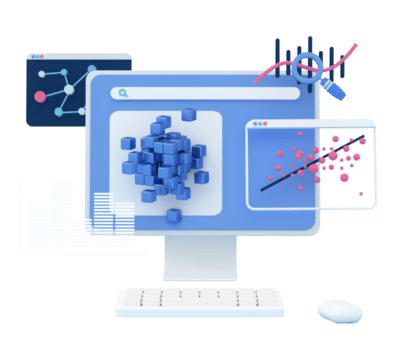One of the crucial aspects for an organisation now-a-days is Data Security, due to which it is essential to have appropriate technologies and framework in place to protect sensitive information. In this blog, we will go through a variety of data security technologies that an organisation can implement to protect their data.

Data Masking and Anonymization
Data masking and anonymization are ways used to cover sensitive data by disguising or removing identifiable information. This is particularly important when participating data for testing, development, or analysis purposes, as it helps prevent unauthorised access to sensitive information.
Data masking involves replacing sensitive data with fictional or climbed data that retains the format and structure of the original data but isn’t identifiable. Anonymization, on the other hand, involves removing or replacing identifiable information from the data set entirely. Anonymous data helps in achieving confidentiality as during the process we delete or encode identifiers that link the employees with their data set.
Data Masking and Anonymization also helps in meeting compliances for organisations. According to the PDPA (Personal Data Privacy Act), sensitive and crucial data cannot be stored on the servers outside India, which can be achieved with this data protection method as it replaces the sensitive data or encodes identifiers . Additionally, according to GDPR Integrity and confidentiality should be kept in mind while handling data which is achieved with this data protection technology as data masking will replace all sensitive data with random string to maintain integrity and confidentiality.
Encryption
The process of converting a readable text to unreadable is known as encryption, it is carried out using a cryptographic algorithm. It’s one of the most critical data security
technologies as it helps ensure that data can not be penetrated or read by unauthorised individuals. There are several types of encryption ways available, including symmetric encryption, asymmetric encryption, and Hashing.
In case of symmetric encryption to cipher and decipher data the same key is used. This system is faster than asymmetric encryption, but the same key must be shared with both the sender and receiver which makes symmetric encryptions less secure. Asymmetric encryption uses a pair of keys, one for encryption and its pair for decryption. Hashing is the process of converting data into a fixed- size string of characters, the size of the string depends on the algorithm used. It’s substantially used to corroborate the integrity of data and to insure that it has not been tampered with.


Firewalls
Firewalls are a type of network security technology that are used to block unauthorised access to organisations data based on the predefined incoming and outgoing security rules.
Firewalls can be implemented in two ways, on the network or application level. Network firewalls are typically placed between an organisation’s internal network and the access point such as the internet, while application firewalls are used to protect specific applications.
Access Controls
Access controls are used to ensure that only authorised individuals have access to sensitive data. These controls can be enforced through a variety of methods, such as something I know ,something I have ,or combination of both i.e. multi factor authentication.
Passwords are the most common system of access control. They can be used to restrict access to a specific account or system.. Biometric authentication uses unique physical characteristics, similar as fingerprints or facial recognition, to corroborate a user’s identity. This system is more secure than Password but can be more expensive to implement. One can use something they have such as an authenticator, pen drive or a secure key to restrict access to the system.


Intrusion Detection and Prevention Systems (IDPS)
Intrusion Detection and Prevention Systems helps an organisation to monitor network traffic and trace malicious activities. It also helps in prevention of attacks as it detects and responds to viruses, worms and Trojans.
IDPSs has two types: host-based and network-based. Host-based IDPSs are installed on individual devices, such as workstation or servers, while network-based IDPSs are placed on a network and monitor all traffic passing through it.
Patch Management
Patch operation is the process of regularly streamlining software and systems with the most recent security patches and updates. This plays a crucial role in data security as software vulnerabilities are frequently exploited by hackers to gain unauthorised access to systems and networks.
Organisations should establish a robust patch operation process that includes relating and prioritising vulnerabilities, testing patches before deployment, and instantly applying patches to all systems and software in the terrain.


Data Loss Prevention (DLP)
DLP is the process or a technology that ensures that sensitive data does not leave an organisation’s network. This can include things like email filtering, data encryption, and user training and awareness.
Email filtering can be used to help sensitive information from being transferred outside the organisation. Data encryption is used to cover data in conveyance and at rest, making it undecipherable to anyone who doesn’t have the decryption key. User training and mindfulness are essential factors of DLP, as they help to ensure that workers understand the significance of data security and how to cover sensitive information.
Backup and Disaster Recovery
Backup and disaster recovery are critical data security technologies that help organisations protect and recover their data from loss or damage due to various incidents such as natural disasters, hardware and/or software corruption and cyber-attacks.
Regularly backing up data and storing it securely at a remote location can help ensure that data can be restored in case of data loss or system failure. Data recovery plans during a disaster should be in place to outline the steps and procedures to be followed in the event of a security breach or other incidents.


Security Information and Event Management (SIEM)
SIEM is a technology that allows organisations to collect, analyse, and report on security-related data from various sources. Based on the data that is collected and the continuous analysis, SIEM can help an organisation to automate response to security incidents in a real time.
Data collection, event correlation, threat detection, and incident response are the four major components of any SIEM solutions. By combining these four components, SIEM solutions can provide organisations with an in-depth view of their current security posture, allowing them to identify potential vulnerabilities and take appropriate action to secure data.
Security Awareness Training
When it comes towards protecting data one of the weakest links is often human error. Therefore, providing regular security awareness training to employees is crucial in preventing security incidents at any organisation.
Security awareness training should cover topics such as do’s and don’ts for creating and managing a password, cyber awareness which helps employees be secure from phishing and social engineering as well as safe browsing practices. It should be mandatory for all employees and regularly updated to reflect the latest security threats and best practices.


Virtual Private Networks (VPNs)
VPNs are used to create an encrypted connection through a secure tunnel between two devices over the internet. They are commonly used to provide remote workers with secure access to an organisation’s network
VPNs help organisations to protect against Man-in-the-Middle (MITM) attacks as it ensures there is an additional layer of security i.e. a secure tunnel plus the encryption. Encryption used in VPN can be symmetric or asymmetric and the keys are only known to the employee and the internet service provider (ISP). Additionally, VPN keeps your IP address hidden from the Internet service provider i.e. employee’s IP address is replaced by VPN’s IP address and then the request is sent to the Internet service provider.
Endpoint Security
Organisations endpoints have always been the primary target for the attackers. An compromised endpoint can lead towards the data loss as well as can tamper with the availability. Hence protecting individual devices, such as laptops, smartphones, and tablets is crucial. This can be done with the help of antivirus software, firewalls, and intrusion detection and prevention systems.
Endpoint security is crucial for remote workers, who may be using their personal devices to access sensitive information. By ensuring that these devices are properly secured, organisations can prevent data breaches and other security incidents.


Cloud Security
The measures taken to protect data stored in the cloud are part of cloud security. Encryption, access controls, and data backup and recovery are few of the things that play a crucial role in protecting data over the cloud.
Cloud has easy scalability and high availability due to which a huge number of organisations are moving their data to the cloud, which makes cloud security as crucial as the on prem security. Securing data on cloud will ensure that employees data is properly secured and prevent from data loss, unauthorised access, and other security incidents.
Incident Response Planning
Incident response planning helps an organisation to deal with the security incident. The plan involves the steps that can be taken to mitigate incidents, such as data breaches or cyber-attacks. This can include things like identifying the types of incidents that are likely to occur, establishing procedures for reporting incidents, as well as it includes training employees on how to respond to incidents.
Incident response planning is essential for reducing the impact of security incidents and maintaining the availability of the system. Also, it prevents them from escalating into larger issues. By having a plan in place, organisations can respond quickly and effectively to security incidents, minimising damage.


Vulnerability Assessment and Penetration Testing (VAPT)
VAPT is a visionary approach to relating vulnerabilities in an organisation’s systems and networks. It involves conducting regular assessments and tests to identify bugs that could be exploited by malicious actors.
Vulnerability assessments involve surveying systems and networks for known vulnerabilities and misconfigurations. Penetration testing, on the other hand, involves bluffing real- world attacks to identify vulnerabilities that may not be identified through automated reviews.
VAPT helps organisations identify and fix vulnerabilities before they’re exploited, reducing the threat of data breaches and other security incidents.
In conclusion, data security is a critical aspect of any organisation’s operations. With the help of technologies and framework an organisation can secure its sensitive data from being exposed to the third party. By implementing the technologies used discussed in this blog, organisations can prevent data breaches, cyber-attacks, and other security incidents, as well as ensure that their data is protected. Additionally, it is essential for an organisation to review, audit and update their data security strategies to keep up with the evolving threat landscape and ensure maximum protection for their data.
How can SecurDI help ?
SecurDI can help you to configure Identity Access Management (IAM) and/or Privileged Access Management (PAM) which are essential factors of data security technologies that can help organisations to cover their sensitive data and IT structure from unauthorised access, data breaches, and cyber threats. Team SecurDI can also help you plan the architecture, choose the correct service provider, and migrate from one version to another or one service provider to another.

